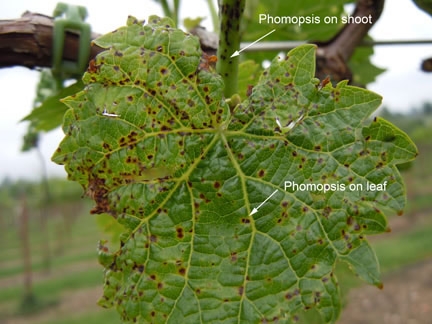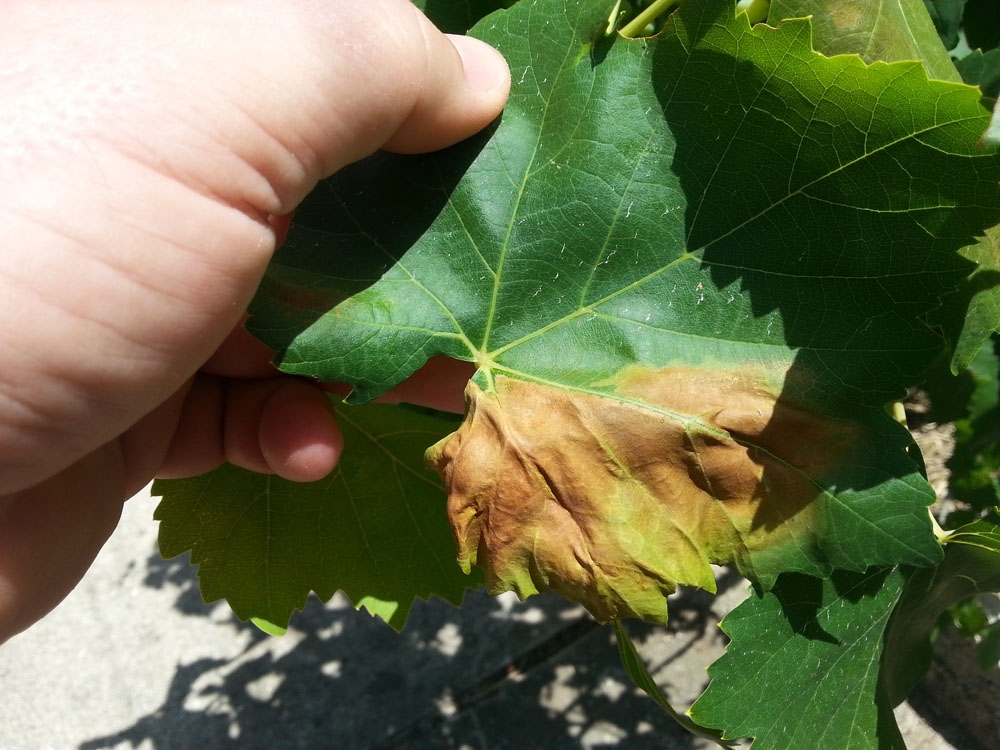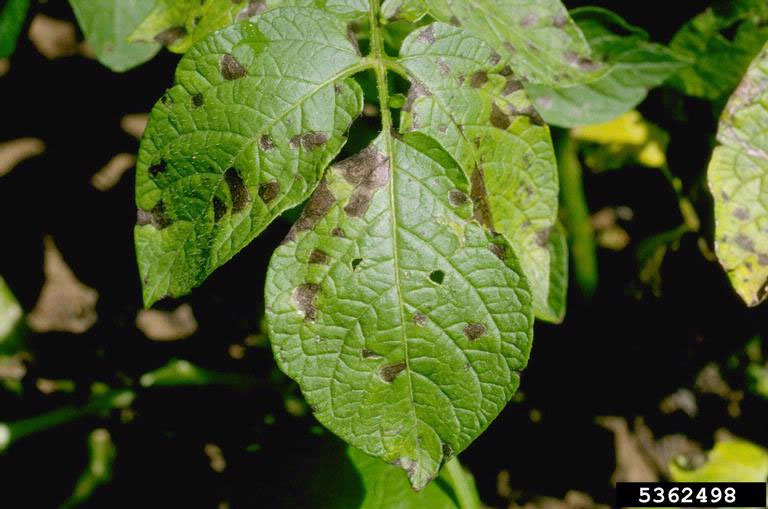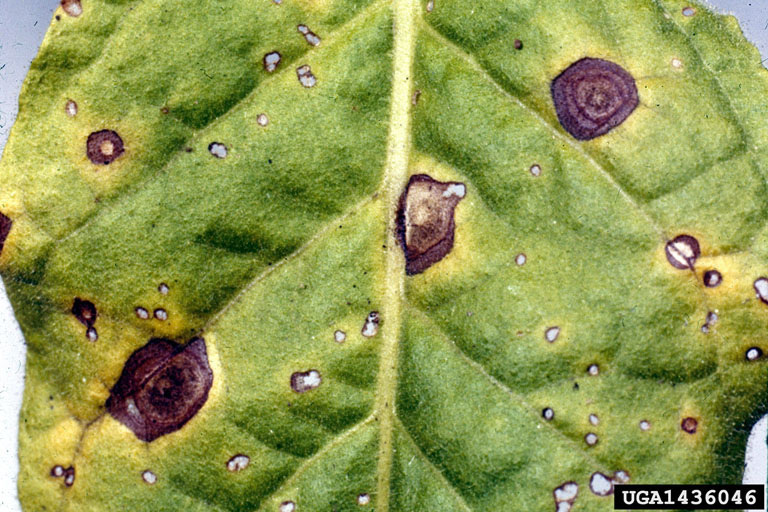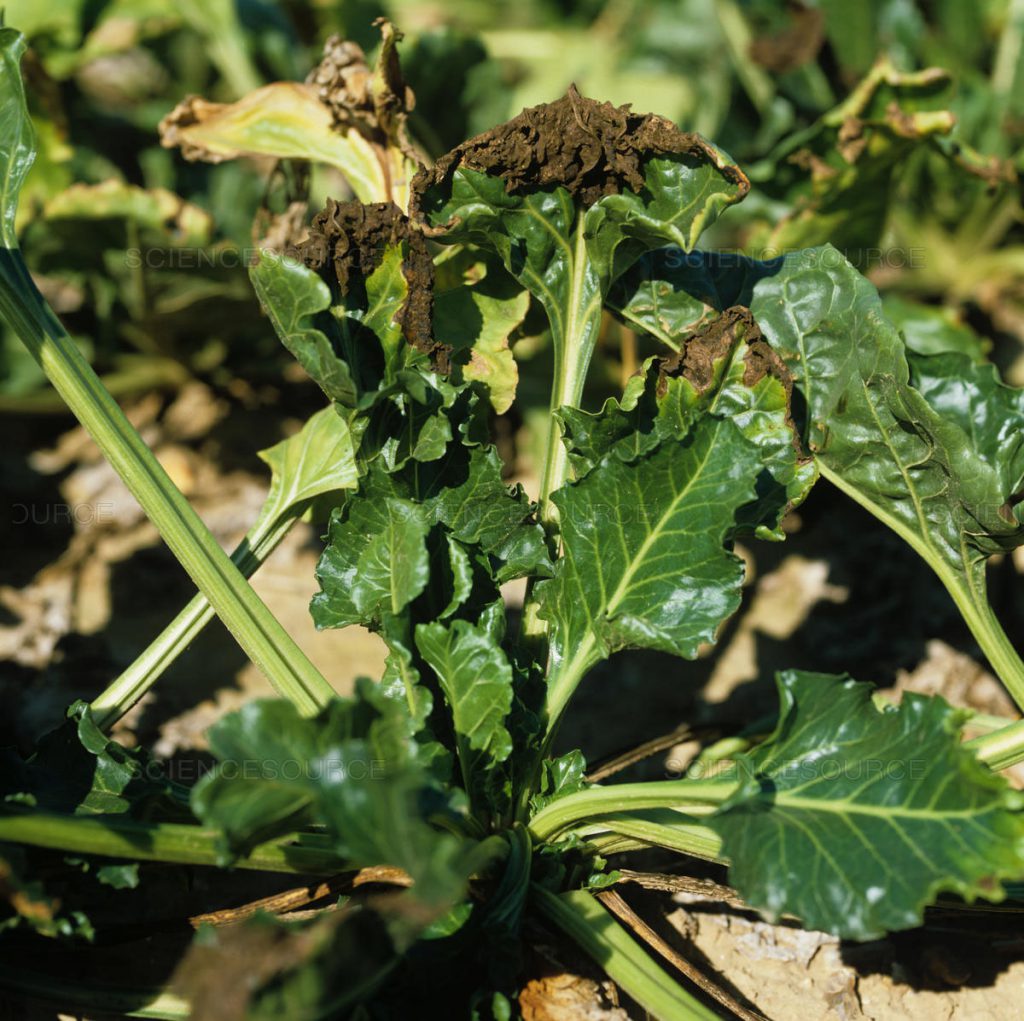Phomopsis disease is widespread in almost all wine-growing regions of Greece. In the last decades, it began to attract considerable attention of all those involved in viticulture, because it can cause great damage: necrosis of heads and stems.
Scientific name: Phomopsis viticola plus Phoma viticola, Phomopsis ampelopsidis Fusicoccum viticolum, Coelomycetes
Greek name:
Symptoms
The shoots, vines and stems are mainly affected, but also the leaves, stems and grapes.
The most severe symptoms occur on the vines. In early spring, the tops affected from the previous year are dead and the buds do not develop. The dead tops are white or “silver” in color and have tiny black spots which are the fruitlets of the pathogen (pycnidia). Later in the spring, in the lower parts of the annual vegetation (shoots, tendrils, vines arms) necrotic areas appear, where the corresponding skin tends to tear, forming elongated fissures. In severe infestation, the clematis acquire a chlorotic appearance, dwarfism and eventually dry out.
On the leaves the infestation appears in the form of small patches of light green color which later turn brownish-black. The presence of numerous spots may lead to necrosis of the leaf surface or to its deformation.
The symptoms of infection of the stems, the tendril and the peduncles are manifested by the formation of elongated necrotic spots with fissures, which subsequently dry out.
The pathogen may also attack the grape berries, which shrink and dry out.
On the surface of the grape berries and vines, the pathogen’s fruit spores are formed on the surface of the grape berries and vines in the form of small spots. In this case, the bark of the vines takes on a very characteristic white color.
Pathogen – Conditions of growth
The disease is caused by the fungus Phomopsis viticola. The fungus overwinters in the affected organs of the vine (tendrils, heads, stems), where it forms its fruitlets (pycnidia) and spores (pycnidiospores) in winter. The spores released from there will infect the new vegetation in spring. Wet and rainy weather is required for the release and dispersal of the spores. Infections are also carried by the cultivation tools and/or propagation material.
The most likely period of infection is from bud development in spring until the shoots reach a length of 15 cm. Cool and wet weather favours infections, which may continue until polishing. A limiting factor in the spread of the disease is the high summer temperatures.
Treatment
The disease is treated by preventive winter spraying (at the stage of “tearing”), at the ‘swelling’ of the bulbs, with the appearance of the first leaves and after 5 days. In addition, affected bracts and tendrils should be destroyed. In order to avoid the transmission of the disease, it is recommended that cultivation tools are disinfected and that the propagating material is completely healthy. In addition, all necessary cultivation measures should be taken to ensure good air circulation in the vineyard.
Source
www.bayercropscience.gr
Phomopsis on grape
Phomopsis cane and leaf spot of grapevines
Phomopsis cane and leaf spot
Tags: PLANT DISEASE • VINEYARD

